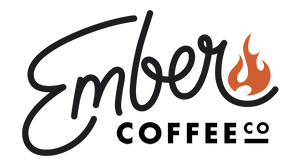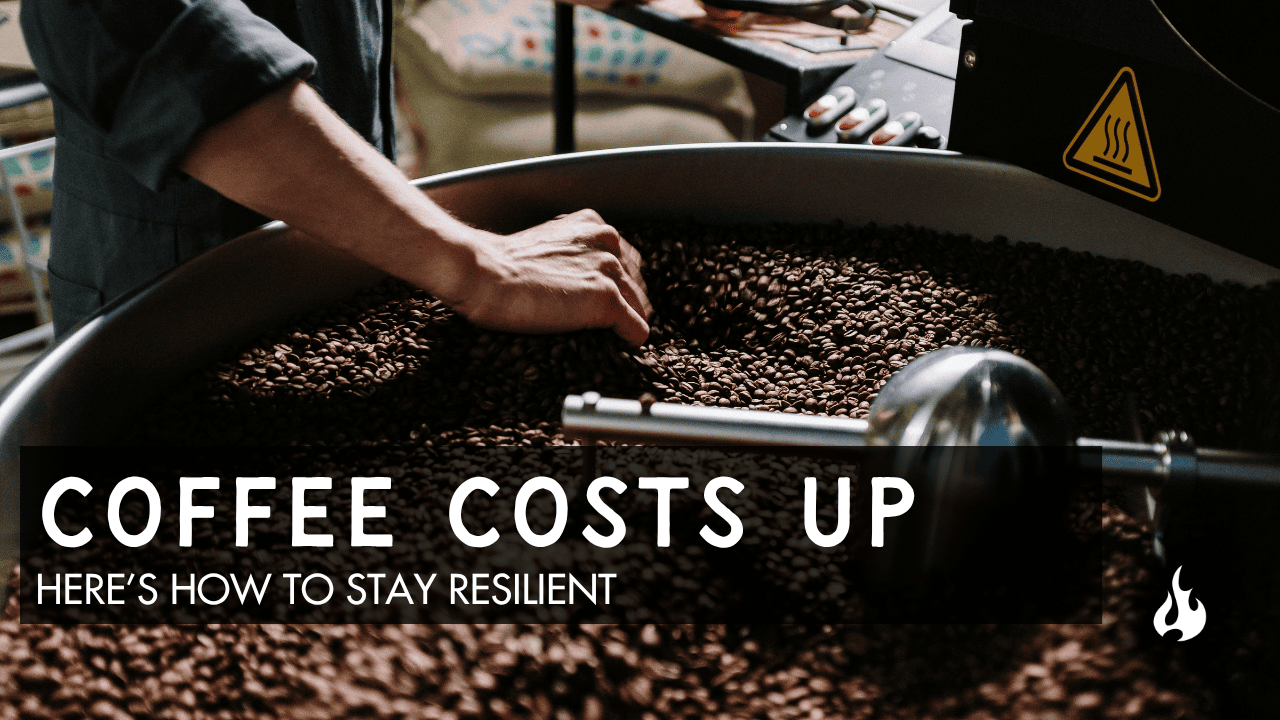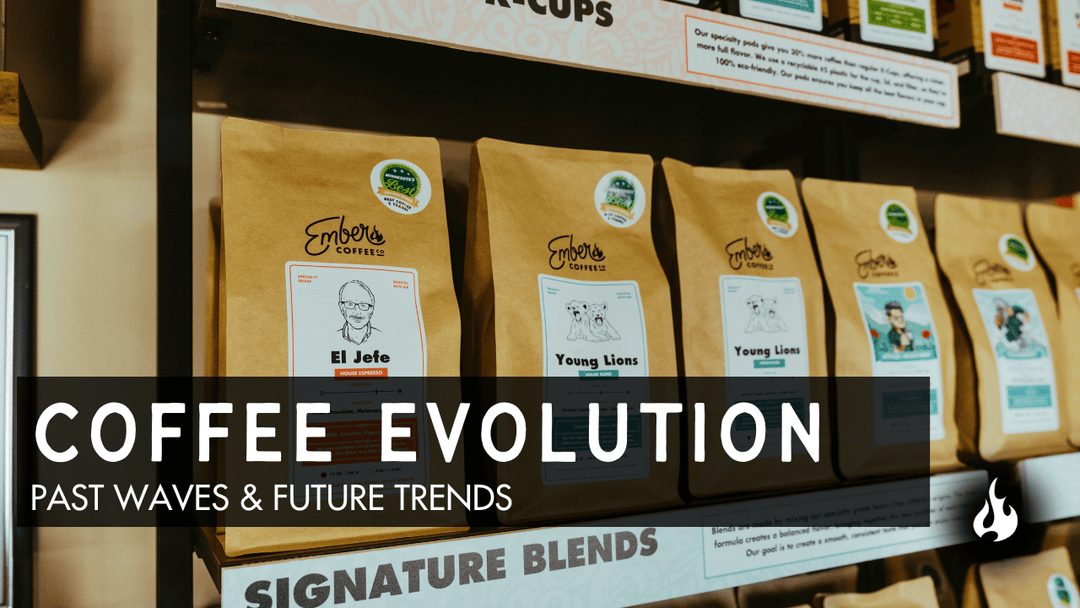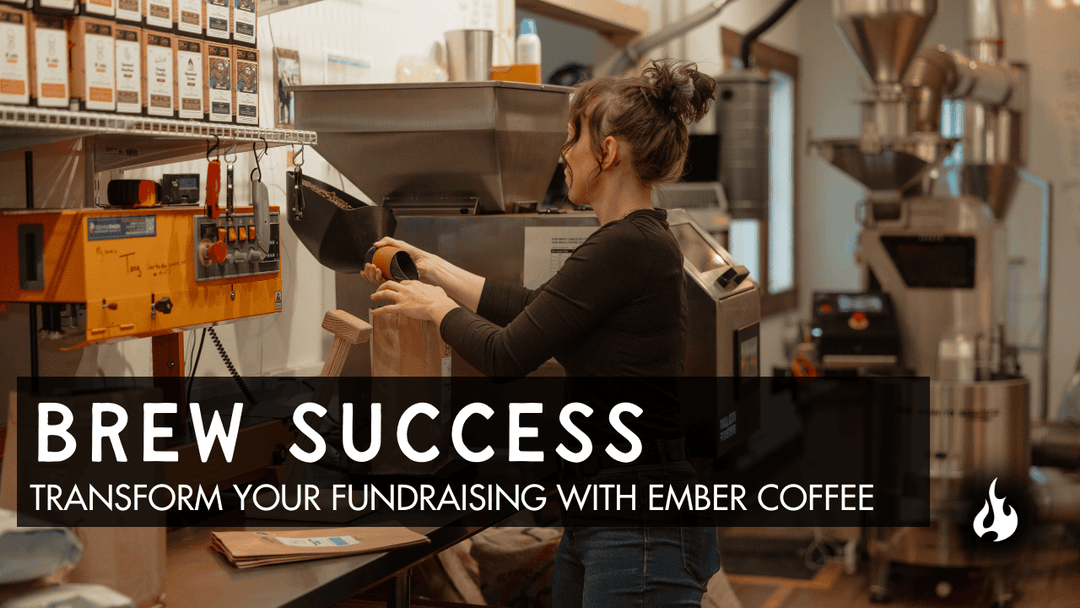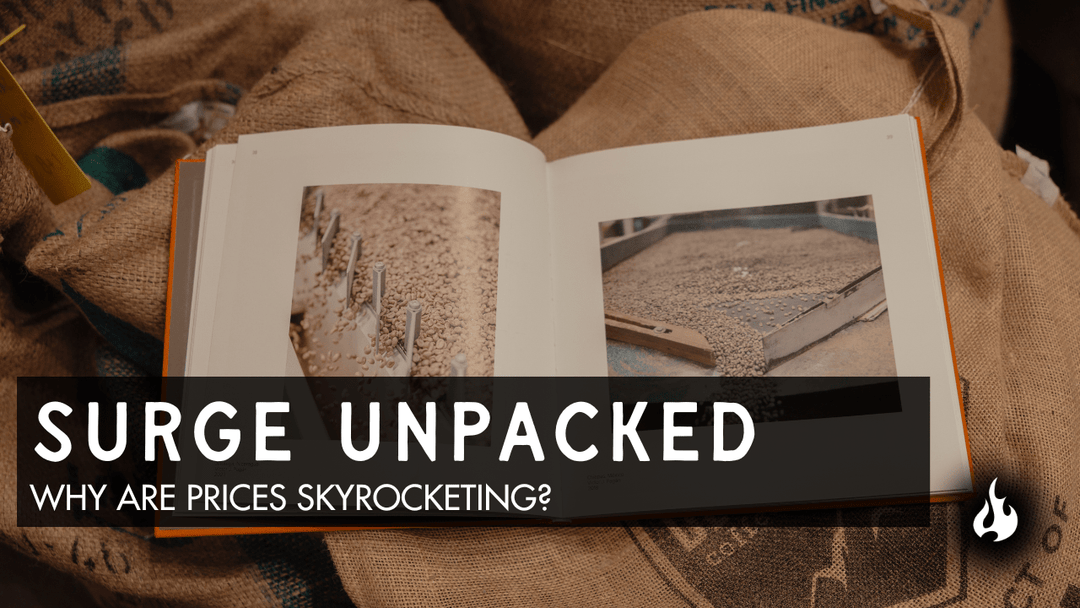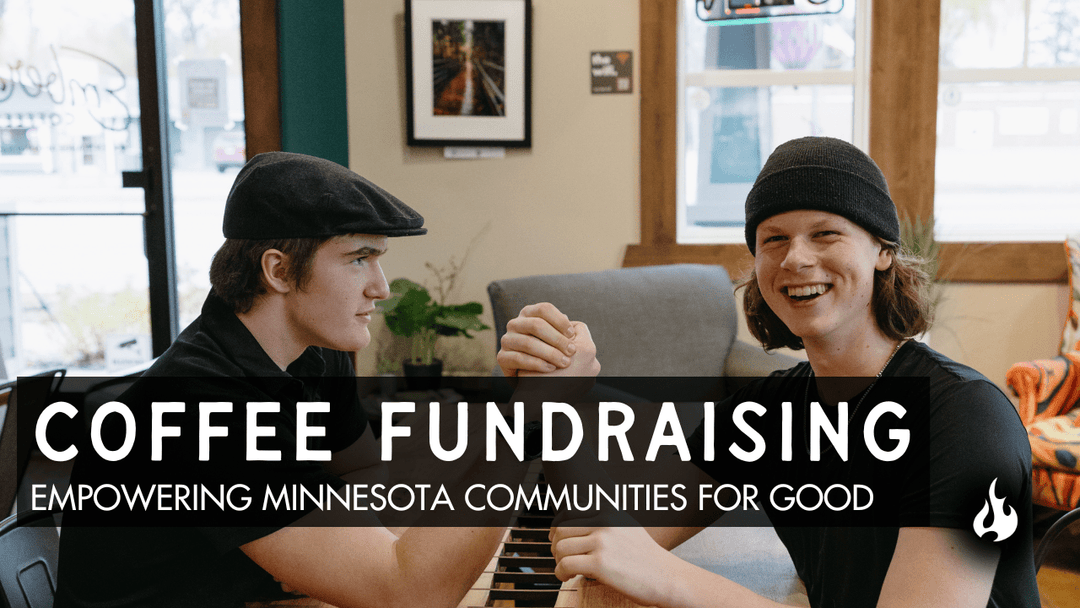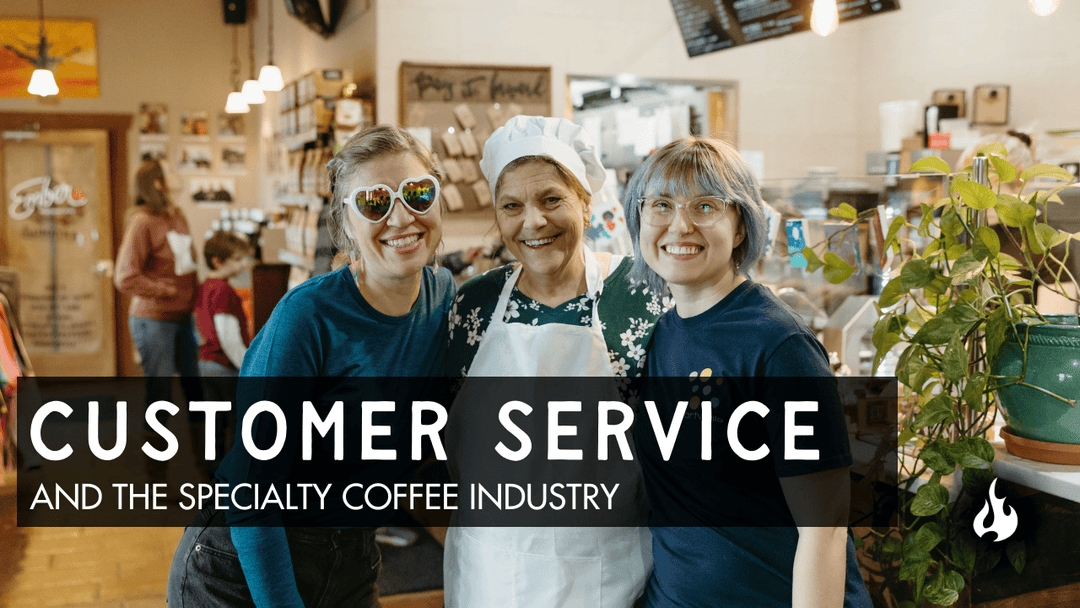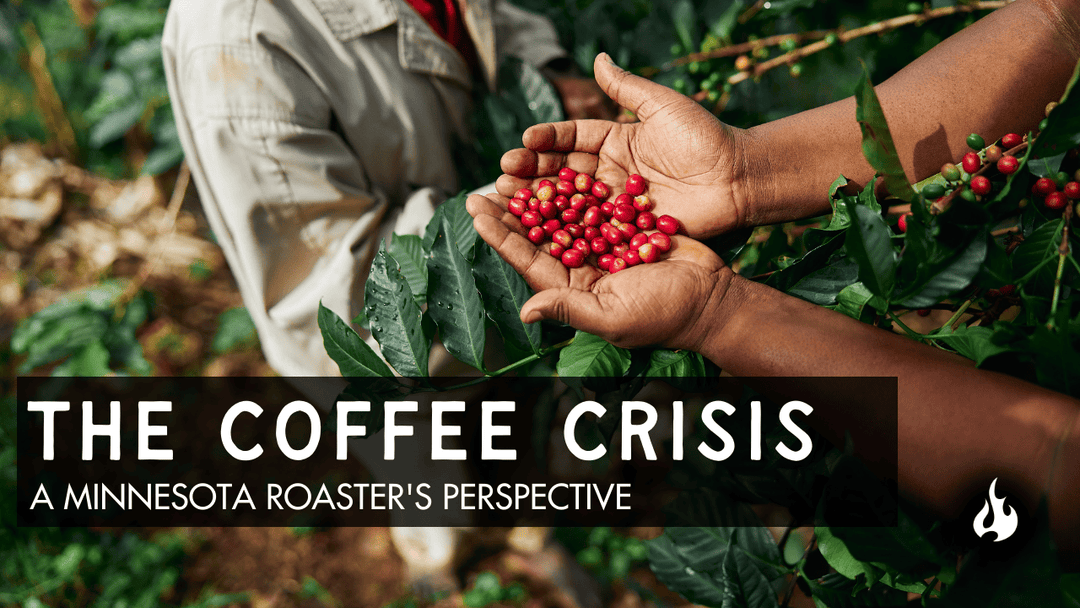The global coffee industry is navigating a wave of unprecedented challenges. Rising operational costs, supply chain disruptions, and shifting consumer preferences are creating significant hurdles for coffee shops and specialty roasters.
However, these challenges also present an opportunity to rethink strategies, build stronger customer loyalty, and stay sustainable in an ever-changing market.
For coffee shop owners and roasters, like Ember Coffee—Minnesota’s trusted specialty roaster for locally roasted coffee—adapting to price hikes and evolving consumer habits while maintaining quality and transparency is essential. This guide will dive into the key challenges, provide actionable insights, and help you position your business to thrive despite the turbulence.

Why Coffee Prices Are Climbing
The price of a cup of coffee has dramatically increased, and the reasons are more complex than they seem. Here’s a breakdown of why coffee costs are on the rise:
- Soaring Green Coffee Prices: Arabica coffee prices hit over $4 per pound in 2025, marking a 70% surge in just one year. Factors like extreme weather events, market speculation, and supply chain disruptions are driving this spike.
- Rising Operational Expenses: Global inflation has led to increased costs for shipping, energy, and labor, all of which impact the bottom line for local roasters, like Ember Coffee.
- Shrinking Margins: Specialty coffee, long regarded as a premium product, is under pressure as even commercial-grade coffee faces steep price increases.
These rising costs make it increasingly difficult for businesses to absorb price hikes, forcing many to rethink pricing strategies without compromising quality.
At Ember Coffee, we continue to focus on delivering high-quality, locally roasted coffee to our Minnesota community. By navigating these challenges with transparency and innovation, we aim to support coffee lovers and other small businesses through industry shifts. Stay tuned as we explore strategies to help your coffee business thrive.
The Balance Between Profitability and Loyalty
One of the biggest challenges coffee businesses face is balancing profitability with keeping customers loyal. For specialty roasters like Ember Coffee in Minnesota, raising prices to offset costs might seem like the obvious solution, but how customers perceive these changes can make or break your business.
Risks of Raising Coffee Prices
- Losing Loyal Customers: Sudden or large price increases can drive even loyal customers to switch to competitors or start brewing coffee at home instead of purchasing locally roasted coffee.
- Decreased Perceived Value: If customers don’t see your price hike as justified—through improved quality, sustainability, or a better experience—you risk damaging your brand’s reputation.
Opportunities to Build Value Perception
- Emphasize Quality: Ember Coffee specializes in crafting exceptional, locally roasted coffee. Highlight the quality of your beans, the sustainability of your sourcing, and the expert craftsmanship behind every cup. Coffee enthusiasts are often willing to pay more for a premium experience.
- Make Gradual Adjustments: Instead of big, sudden price jumps, opt for small, incremental changes. This approach helps customers adapt without feeling priced out.
For specialty coffee roasters like Ember Coffee, finding the right balance between fair pricing and maintaining a loyal customer base is key to long-term success. By focusing on delivering value and communicating it effectively, you can grow your business without losing what makes it special.

Adapting to Changing Consumer Behavior
The coffee world has changed dramatically in recent years, reshaping how and where people enjoy their daily cup. According to the National Coffee Association’s 2025 report, 71% of coffee drinkers now brew at home, a significant rise from 63% just five years ago. Meanwhile, cafés have shifted from being part of a daily routine to occasional indulgence destinations.
For specialty coffee roasters like Ember Coffee in Minnesota, these changes present an incredible opportunity to adapt and thrive. By embracing these evolving habits, Ember Coffee can offer both convenience and unique experiences to its loyal customers.
Here’s how Ember Coffee can meet these trends:
- Embrace At-Home Brewing: As more people choose to brew at home, Ember Coffee can become an essential part of their daily routine by offering locally roasted beans, high-quality brewing equipment, and easy-to-follow brewing guides. Supporting a local business while enjoying better coffee at home? That’s a win for customers.
- Deliver Memorable Café Experiences: While at-home brewing is growing, nothing replaces the magic of a warm, inviting café. By focusing on exceptional service, expertly crafted drinks, and unique specialty roasts, Ember Coffee can make every visit a truly unforgettable experience.
- Foster Community: More than just great coffee, Ember Coffee can build loyalty by creating meaningful connections. Whether through loyalty programs, appreciation events, or transparency about their roasting process, Ember Coffee has the chance to stand out as a true Minnesota staple—focused on quality and authenticity.
By blending the convenience of at-home brewing with the charm of a welcoming café and a strong sense of community, Ember Coffee can continue to evolve with the times while staying true to its roots. This is how a local Minnesota roaster not only survives but thrives in the shifting coffee landscape.
Transparency That Builds Trust: Ember Coffee Leads the Way
At Ember Coffee, a specialty roaster in Minnesota, transparency is key to building trust and loyalty, especially during times of rising costs. Locally roasted coffee is more than just a product—it's a story, and we believe our customers deserve to know every detail behind each cup.
How Ember Coffee Communicates Value
- Detailed Cost Breakdown: We’re proud to share where your money goes. From sourcing the highest-quality beans to paying fair wages for farmers and supporting sustainable practices, every cent reflects our commitment to excellence in locally roasted coffee.
- Radical Transparency: By embracing transparency, Ember Coffee builds stronger connections with our customers. We openly share the challenges of slim margins and explain how premium prices support better quality beans, sustainability initiatives, and ethical practices.
- The Human Side: Behind every bag of Ember Coffee is a story. From the farmers who grow our specialty coffee beans to the roasters here in Minnesota who craft each batch, we celebrate the people who make it all possible. Sharing these stories deepens the emotional connection between our customers and their favorite locally roasted coffee.
By choosing Ember Coffee, you're not just enjoying a uniquely flavorful cup; you're joining a community that values ethical practices and supports a thriving coffee ecosystem. Together, we celebrate the artistry of coffee and the people who make it truly special.
Creating Sustainable Pricing Strategies
Pricing is more than just a number—it’s a reflection of your business’s financial health, your values, and your long-term vision. A well-thought-out pricing strategy can ensure stability while communicating the quality of your offerings to customers.
Align Pricing with Operating Costs
Your prices should always reflect the realities of your business expenses, ensuring you maintain healthy margins to sustain growth. Regularly assess your operating costs, from sourcing green coffee beans and covering energy expenses to managing shipping fees. These costs can shift due to market conditions, so staying on top of them prevents razor-thin margins or financial surprises. Transparent pricing that accounts for these factors also builds trust with your customers—they’ll know they’re paying for quality and care.
Introduce Tiered Pricing
A tiered pricing model allows you to cater to a broader range of customers while showcasing the variety of your offerings. For example, you can provide affordable, approachable blends for your everyday coffee drinker while also offering exclusive, single-origin or limited-edition options for enthusiasts seeking something special. This strategy accommodates different budgets and tastes while creating opportunities to upsell premium products. By highlighting the unique qualities of each tier, you can help customers see the value behind every option.
Promote Quality in Every Cup
Pricing is only meaningful if customers understand the value they’re paying for. Every cup should tell a story of care and expertise, from sourcing to brewing. Consistency is key: a coffee that’s excellent 9 out of 10 times will command a higher price than one that’s inconsistent or average. Educate your customers about your commitment to quality, whether it’s through superior sourcing practices, expert roasting techniques, or outstanding preparation. When customers consistently experience quality, they’ll see your pricing as a reflection of the effort and dedication behind every cup.
The Path Forward
Overcoming Industry Volatility
The coffee industry faces constant challenges, from climate change to economic instability. These factors bring volatility to coffee prices and supply chains, making it more important than ever to build resilience into your operations. Here are key strategies to help stabilize your business:
Invest in Efficiency
Modernizing your equipment and processes not only boosts productivity but also reduces energy consumption and waste. Upgraded roasting machines, for example, can improve consistency while lowering energy use, and optimizing workflows can save time and resources. These enhancements may require upfront investment, but they pay off in the long run with reduced costs and smoother operations.
Stock Smartly
Inventory management is critical in a volatile market. Holding leaner stock can help you avoid over-purchasing and tying up cash in unused inventory, while still ensuring you have enough supply to navigate potential delays in the supply chain. Building strong relationships with suppliers and understanding seasonal trends can also help you plan smarter and respond more quickly to changes.
Plan for Flexibility
Dynamic pricing strategies are essential in a fluctuating market. Be prepared to adjust retail prices as costs shift—whether it’s due to rising bean prices, transportation fees, or energy costs. Communicate these changes with transparency, helping customers understand the reasons behind price adjustments. Flexibility in pricing ensures your business remains sustainable while maintaining the trust of your audience.
The future of coffee depends on businesses willing to adapt, innovate, and connect. By prioritizing quality, fostering transparency, and engaging your community, you can not only survive but thrive in this era of rising costs.

The Role of Community in Coffee Success
At Ember Coffee Co., we believe coffee is more than just a drink—it’s a connection, a conversation, and a culture. Great coffee isn’t just about the beans; it’s about the relationships it inspires and the communities it nurtures. Here’s how we bring people together, one cup at a time:
Building Meaningful Connections
A thriving coffee business starts with its community. It’s not just about selling coffee—it’s about creating experiences that resonate. Share your passion by offering valuable insights through blog posts, videos, and social media. Dive into brewing techniques, tasting notes, and the unique stories behind your beans to build stronger bonds with your customers.
At Ember Coffee Co., we’re more than just a coffee supplier—we’re your partner in success. From ethically sourced, small-batch beans to expert resources for café owners, we’re here to help you grow, connect, and thrive in the coffee industry.
Ready to elevate your coffee game? Let’s make it happen. Contact us for a consultation or browse our premium offerings today. Together, we’ll brew stronger connections and a brighter future.
